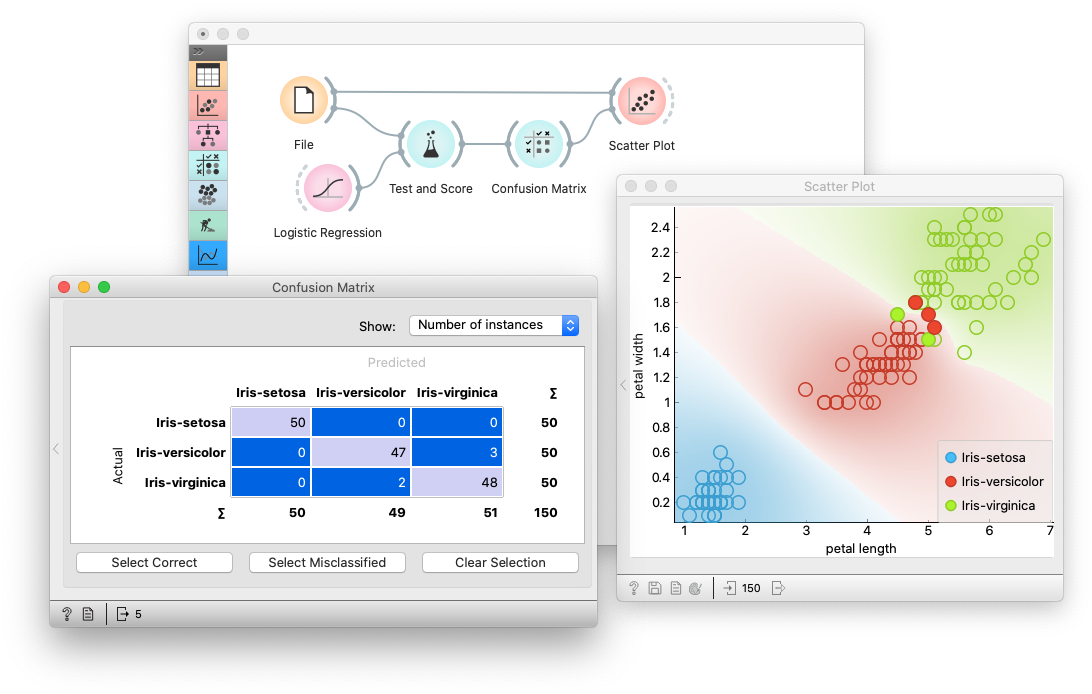Orange is a data mining and visualization toolbox for novice and expert alike. To explore data with Orange, one requires no programming or in-depth mathematical knowledge. We believe that workflow-based data science tools democratize data science by hiding complex underlying mechanics and exposing intuitive concepts. Anyone who owns data, or is motivated to peek into data, should have the means to do so.
Want to get involved? Join us on 
Take a look at our contributing guide, it might answer some questions, and it outlines the standards we adhere to.
Check out our widget development for a comprehensive guide on writing Orange widgets.
If you're looking for a good starting point, check out our 
The development of Orange is primarily split into three repositories:
biolab/orange-canvas-core implements canvas elements,
biolab/orange-widget-base implements a widget window's interface elements,
biolab/orange3 brings it all together and implements the base data mining toolbox.
Additionally, add-ons implement additional widgets for more specific use cases. Anyone can write an add-on. Below is a list of our first-party add-ons:
biolab/orange3-text
biolab/orange3-bioinformatics
biolab/orange3-timeseries
biolab/orange3-single-cell
biolab/orange3-imageanalytics
biolab/orange3-educational
biolab/orange3-geo
biolab/orange3-associate
biolab/orange3-network
- Set up a virtual environment. We recommend Miniconda.
conda create python=3 --name orange3 - Fork your chosen repository.
Press the fork button in top-right corner of the page - Clone it.
git clone ssh://git@github.com/<your-username>/<repo-name> - Install it.
pip install -e .orpython setup.py develop
Now you're ready to work with git. See GitHub's guides on pull requests, forks if you're unfamiliar.
If you're having trouble, get in touch on 
For easy installation, 
Orange requires Python 3.6 or newer.
First, install Miniconda for your OS. Create virtual environment for Orange:
conda create python=3 --name orange3In your Anaconda Prompt add conda-forge to your channels:
conda config --add channels conda-forgeThis will enable access to the latest Orange release. Then install Orange3:
conda install orange3To install the add-ons, follow a similar recipe:
conda install orange3-<addon name>See specific add-on repositories for details.
To install Orange with pip, run the following.
# Install some build requirements via your system's package manager
sudo apt install virtualenv build-essential python3-dev
# Create a separate Python environment for Orange and its dependencies ...
virtualenv --python=python3 --system-site-packages orange3venv
# ... and make it the active one
source orange3venv/bin/activate
# Install Orange
pip install orange3To install Orange with winget, run:
winget install --id UniversityofLjubljana.Orange To start Orange GUI from the command line, run:
orange-canvas
# or
python3 -m Orange.canvasAppend --help for a list of program options.





